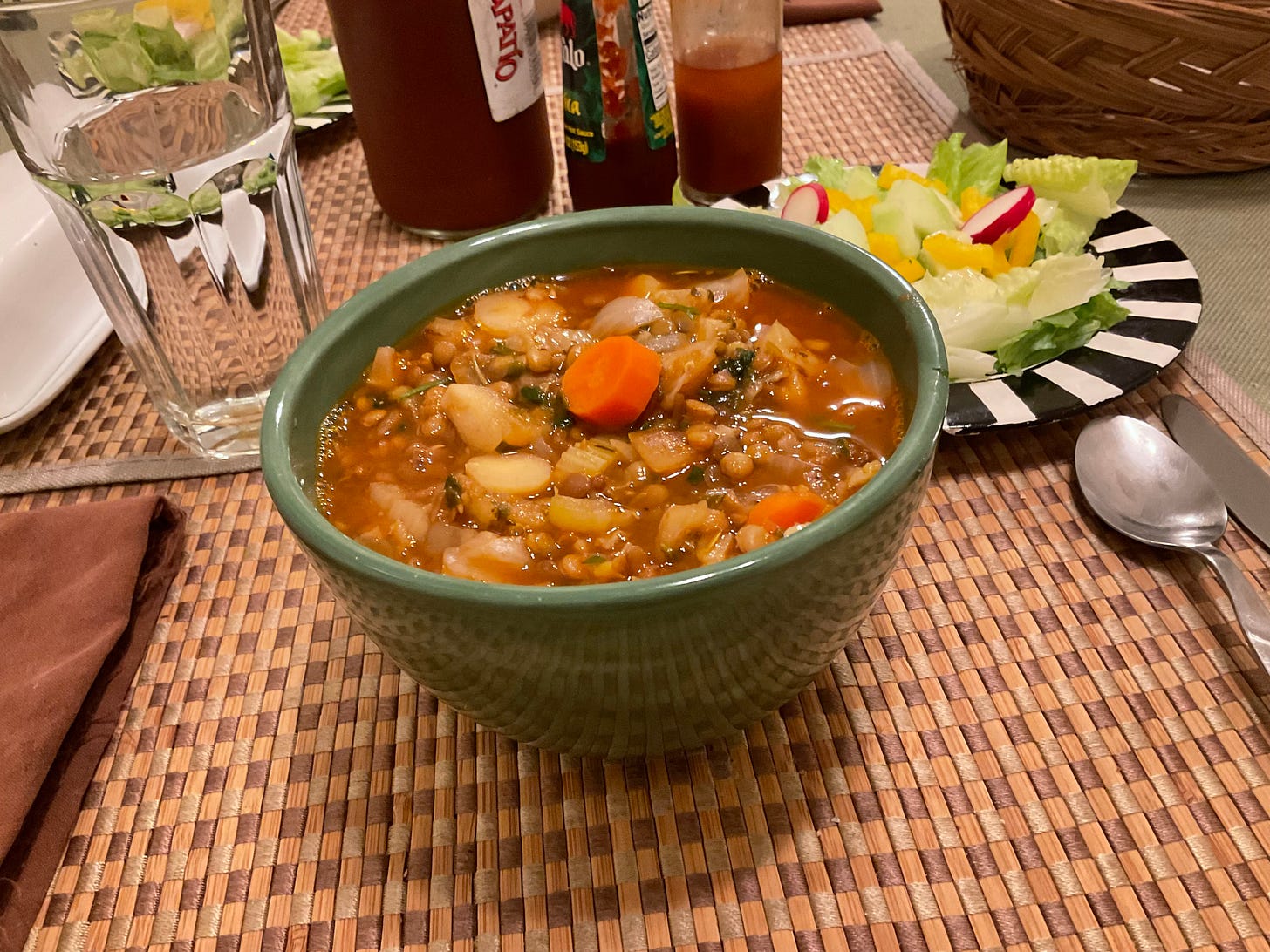From the archives: Eliminating food waste: doing your part to combat climate change
You can eat well, save money, and save the planet
This week we dip into the archives, all the way back to February of 2022 for this Green Dispatch on food waste and climate change. Portions of this Dispatch were updated.
In the United States, we waste 30 to 40 percent of our food. About a third, and maybe close to half, of all our kohlrabi, kale, pork chops, green beens, fried chicken, even candy corn winds up in landfill rather than our dinner plates.
According to EPA estimates, most of what we send to our landfills is wasted food, comprising 24 percent of municipal solid waste. And while food waste is a world-wide problem—about 1.4 billion tons wasted every year—the U.S. wastes the most, almost 40 million tons.
Besides costing us plenty—the average family of four spends between $1,855 and $3,100 annually on food they throw away—the environmental ramifications of this amount of waste are huge. In the U.S., half of our land area is taken up by agriculture. Imagine a significant portion of that farmland returned to forest and grassland. Imagine the overcrowded CAFOs with fewer cattle confined in their manure-laden lots.
Another environmental harm from all that food waste is how it contributes to global warming. When we toss out a pint of berries, we are also tossing out the fertilizer used to grow them. And we throw away the resources used to ship and refrigerate them as well. In part one of a two-part report published in November 2021, the EPA estimated for every year in the U.S., the equivalent of 170 million metric tons of carbon dioxide—equal to the annual CO2 emissions of 42 coal-fired power plants—is emitted into our atmosphere due to the food we waste.
All that wasted food winds up in landfills to rot. Rotting food produces methane, a powerful greenhouse gas, making U.S. municipal landfills the country’s third largest source of human-related methane emissions. U.S. greenhouse gas emissions from landfill are equivalent to the greenhouse gasses emitted by 24 million gasoline powered automobiles.
What we can do
Some of the waste is inevitable. Birds, rats, and insects eat some of the food even before it’s harvested, and there is loss and spoilage in transport. But a lot of it is wasted by you and me in our homes.
We will never get rid of all home food waste. There are those times when you reach for an enticing orange, only to find the whole thing is squishy and the other side of it has bluish white fuzz all over it. We all forget the bit of leftover pasta sauce that wound up in the back of the fridge, only to be found when it has a big pile of mold on top.
But there are things you can do to mitigate your personal food waste. One of the things I wind up doing a couple times a month is to cook up what my wife and I call refrigerator soup. Remember the lentil soup recipe from December? That is the basis for this soup.
I just make a lentil soup, and whatever is hanging around in the refrigerator looking like it needs to be used goes in the pot: the potato that has a few sprouts on it, the tad witty celery, carrots, turnips, etc. Whatever produce whose expiration date is fast approaching winds up in the soup.
I’ll throw in lots of other things, too. Left over pasta sauce? It turns into soup. Left over salsa? It’s now soup, too. After throwing everything together and cooking up the concoction for about 40 minutes, I serve it with fresh bread or crackers. As the ingredients are never the same, each refrigerator soup is unique. Every time my wife or I make this refrigerator soup, it’s been delicious. And I know that we will never make another soup quite like any that we’ve previously made.
Here’s the recipe:
1 cup dried lentils
4 cups water
1 bouillon cube (Optional. If you season the soup as directed below, you can omit the bouillon and just use a pinch of salt.)
About 4 cups of diced potatoes, celery, parsnips, or other produce that cooks up well with lentils
Up to 2 cups of leftover pasta sauce, other soups, or sauces.
Throw everything in a big pot. Heat on a stove till it comes to a boil. Lower heat and simmer for about 40 minutes, adding more water as needed. Season with garlic, cilantro, thyme, marjoram, oregano, or anything else that seems tasty. Enjoy and think about the greenhouse gases and the money you have saved

Here are a couple other refrigerator soup recipes:
A Refrigerator Soup with meat
Do you have a planet-friendly recipe or know of an online resource for cutting down food waste? Do you have strategies for saving food? Please share.





I like banana bread or muffins so much that I sometimes LET the bananas go over ripe, but usually I discover 'the turn' after the fact. Apples also make great applesauce if they lose their crunchy attractiveness.
Sounds excellent and soup weather is on the way!